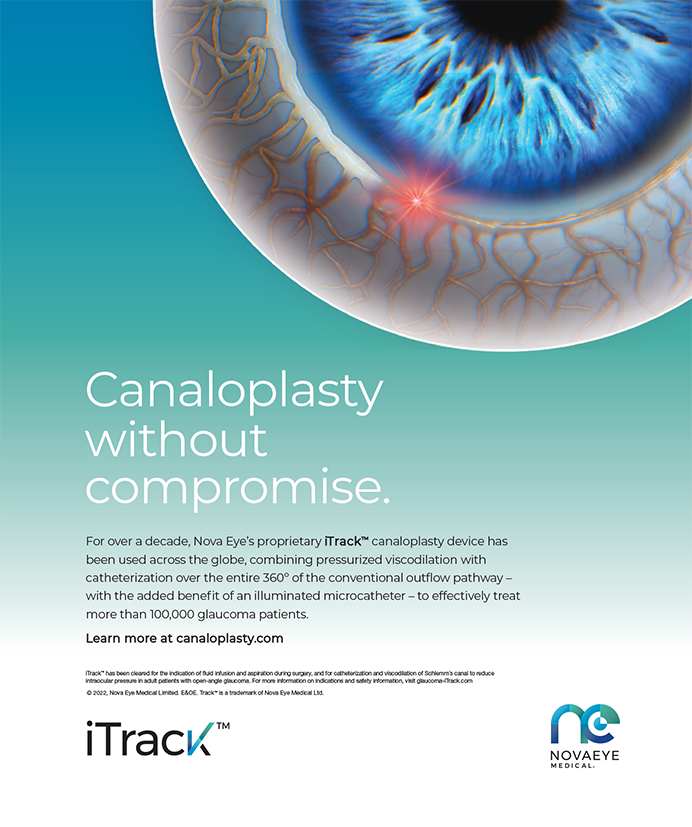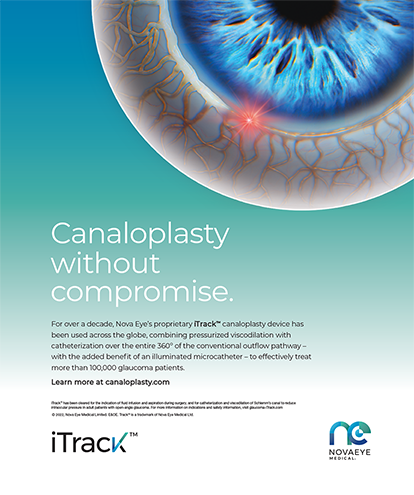When is a refractive IOL an option for a patient who does not have cataracts and desires correction of his refractive error? Would a 45-year-old emmetropic presbyope who wanted to get rid of his reading glasses be a good candidate for refractive lens exchange? This is a difficult question and one that cannot yet be easily answered because of the IOLs that are currently available. Although the present generation of presbyopia-correcting IOLs is very decent, I am not sure that these lenses are good enough to deliver the results necessary for this type of patient. On the other hand, presbyopic hyperopes represent a much better group of patients for refractive lens exchange. Unlike the former group, the presbyopic hyperope has poor uncorrected vision for both distance and near and is therefore more likely to perceive a significant improvement after refractive lens exchange.
As the safety and effectiveness of refractive IOLs improves, they will be used more frequently as an alternative form of vision correction among patients who are poor candidates for laser refractive surgery.
SELECTING PATIENTS
In my experience, the candidates that achieve the highest rates of success after refractive lens exchange are presbyopes with more than 3.00D of hyperopia. Patients with presbyopia and moderate amounts of myopia (eg, 5.00D) are also good candidates, because this group like the former is totally dependent on spectacles and/or contact lenses for all tasks. Presbyopia-correcting IOLs free them from this dependence.
The candidates that are most difficult to please for refractive lens exchange are mildly myopic individuals, because they do not use their glasses for reading and may only need distance correction occasionally. Their quality of vision for distance and/or near may be off just enough from what they previous had to cause difficulty. Finally, patients with myopia in excess of 7.00D have an increased risk for retinal detachment, especially men over the age of 45 years with axial lengths greater than 25mm. Refractive lens exchange as an elective procedure (eg, no cataracts) may not be justified in this group due to the aforementioned associated risks.
Patients with minimal astigmatism are also ideal candidates for refractive IOLs, because surgeons do not have to correct cylinder as part of the procedure. Individuals with higher levels of astigmatism, however, require its correction through surgical techniques such as peripheral corneal relaxing incisions or laser surgery.
DIFFERENCES IN CATARACT VERSUS REFRACTIVE PROCEDURES
The surgical technique for implanting a refractive IOL in a patient without cataract does not differ from conventional cataract surgery. The optics of the presbyopia-correcting IOLs require accurate centration, which demands a well-centered capsulorhexis and zonular integrity necessary for successful outcomes. If a complication such as a compromised capsular bag occurs during refractive lens exchange, one might want to reconsider implanting a multifocal IOL. An accommodative lens would definitely be contraindicated Accurate biometry, keratometry, and the use of modern regression formulae are critical for determining IOL power. Achieving emmetropia is absolutely essential for the success of presbyopia-correcting IOLs. With the refractive patient, even more importantly than the cataract patient, surgeons need to be more sensitive to the development of posterior capsular opacification. Meticulous cortical cleanup and posterior capsular polishing are therefore crucial to minimizing this complication.
PHACOEMULSIFICATION
Obviously, surgeons should strive to remove the crystalline lens as atraumatically as possible. Complications during routine cataract surgery are tragic enough, but they are particularly upsetting in purely elective procedures like refractive lens exchange. Fortunately, advances in phaco technology such as power modulations have made the lens' removal safer. Other technological improvements include bimanual methods, torsional phacoemulsification, and the use of water pulses (Aqualase; Alcon Laboratories, Fort Worth, TX)
REALISTIC EXPECTATIONS FOR VISUAL IMPROVEMENT
Refractive IOLs can enable patients to see at both distance and near without glasses. Obviously, postoperative results will vary. For the ophthalmologist, an important part of implanting refractive IOLs is choosing the correct lens for each patient's individual needs. Axial length and keratometric data as well as other ocular characteristics are important, but they may not affect postoperative outcomes as much as a patient's personality. Ophthalmologists need to consider what the patient does for a living, how he uses his eyes (eg, does he read more than perform intermediate tasks or vice versa?), the required sharpness of distance vision for his profession or hobbies, etc. Identifying a patient's true expectations is one of the biggest challenges that surgeons face. Some patients ask for results that we frankly cannot deliver. They are inappropriate candidates for refractive lens exchange.
CONCLUSION
Clearly, the bar for visual rehabilitation with IOLs has been raised. We now can insert accommodative and multifocal IOLs through ultra-small incisions. These lenses permit excellent uncorrected simultaneous distance and near vision for patients, minimize aberrations and block ultraviolet and near ultraviolet light. We can now insert lenses that have been preloaded into an injector. Furthermore, if an error in power determination is made, we may soon be able to adjust or modify of the IOL's power after it is placed in the eye. As we begin to imagine the potential synergies between all these technologies it is obvious that we are at the brink of individualizing IOLs on a patient-by-patient basis depending on the need and makeup of each person.
My recommendation to surgeons who desire to practice current state-of-the-art ophthalmology is to get into the refractive IOL game. Do not stand on the sidelines waiting for the perfect answer. Become knowledgeable and experience firsthand what these lenses offer. An exciting armamentarium of technologies that offer the potential for a better life for our patients is now at our disposal. Without question, these are not yet perfected. Although each technology has potential pitfalls they all have far more attributes. Cataract and refractive surgeons have an obligation to be knowledgeable about the available options and willing to discuss presbyopia-correcting IOLs with every prospective patient. Although there can be a potential "poison" with each choice, we now have the ability to provide appropriate patients with something very special, and, for those interested it can be a true miracle.
But, perhaps more important than what techniques and technology will be used is for whom we will use them. Because the advent of technologies and techniques has made the removal of the crystalline lens safer and more effective, I believe that lensectomy with IOL implantation will be the future of refractive surgery. Like I. Howard Fine, MD, of Eugene, Oregon, who was the first person I heard express this idea, I believe that lens removal will become a procedure most commonly performed on patients younger than 65 years. Surgeons will then be reimbursed more fairly for their work, the government will save money as lens removal occurs before patients reach Medicare age, and manufacturers will be more fairly paid for the technologies they develop, which will allow them to continue the expensive and time-consuming R&D and regulatory measures necessary to continue to advance the field. In the end, patients will undergo a safer and more effective procedure and achieve improved outcomes long before they develop cataracts, and spectacles may become exhibits in a museum that our great grandchildren will ask us about.
Section Editor Eric D. Donnenfeld, MD, is a partner in Ophthalmic Consultants of Long Island and is Co-Chairman of Corneal and External Disease at the Manhattan Eye, Ear and Throat Hospital in New York. He acknowledged no financial interest in any products mentioned herein. Dr. Donnenfeld may be reached at (516) 766-2519; eddoph@aol.com.
Stephen S. Lane, MD, is a clinical professor at the University of Minnesota in St. Paul. He is a consultant to Alcon Laboratories, Inc., and Visiogen, Inc. Dr. Lane may be reached at (651) 275-3000; sslane@associatedeyecare.com.


